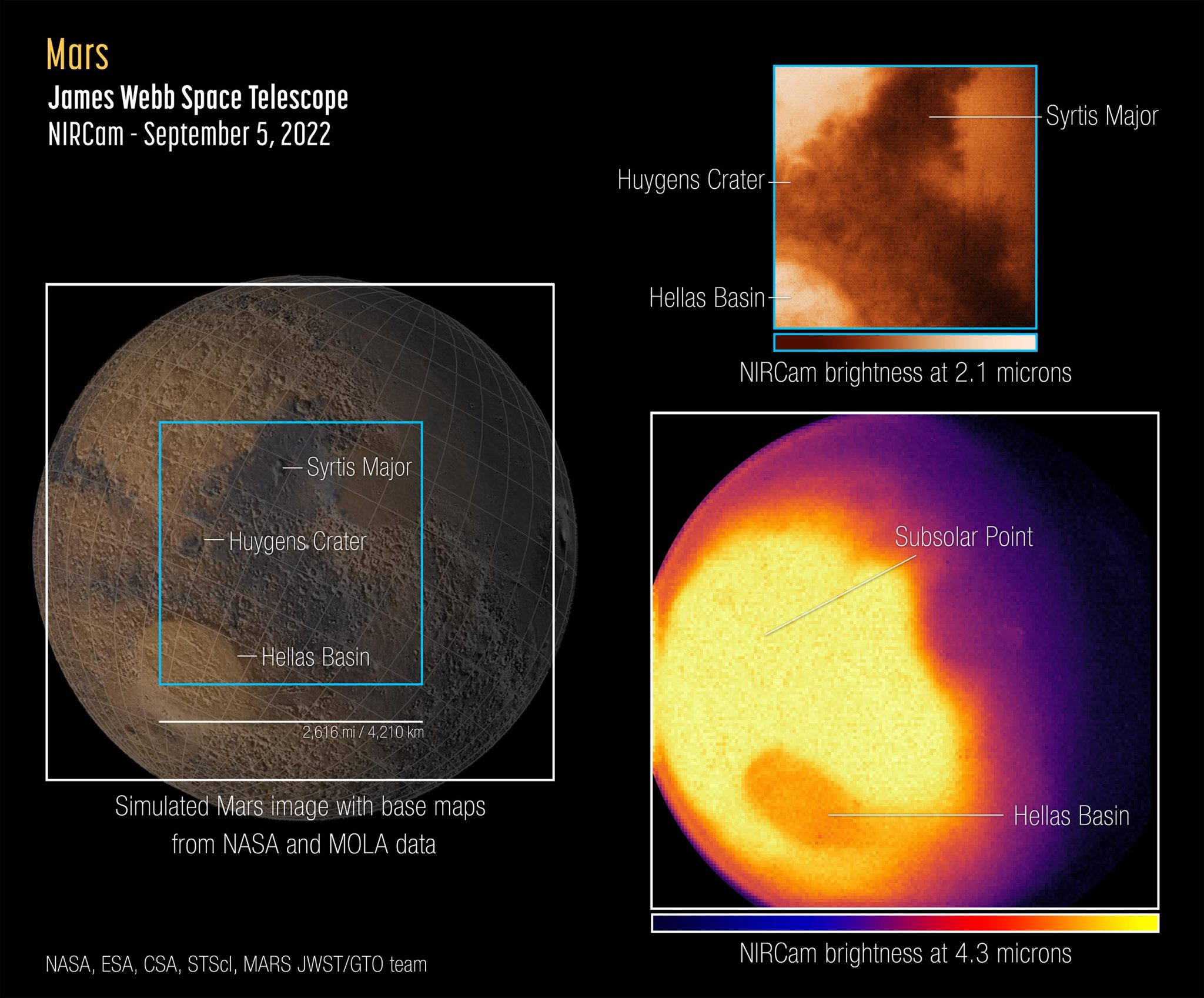First Webb Space Telescope Images of Red Planet

Webb’s first images of Mars, captured by its NIRCam instrument on September 5, 2022 [Guaranteed Time Observation Program 1415]. Left: Reference map of the observed hemisphere of Mars from NASA and the Mars Orbiter Laser Altimeter (MOLA). Top right: NIRCam image showing 2.1-micron (F212 filter) reflected sunlight, revealing surface features such as craters and dust layers. Bottom right: Simultaneous NIRCam image showing ~4.3-micron (F430M filter) emitted light that reveals temperature differences with latitude and time of day, as well as darkening of the Hellas Basin caused by atmospheric effects. The bright yellow area is just at the saturation limit of the detector. Credit: NASA, ESA, CSA, STScI, Mars JWST/GTO team
On September 5, NASA’s James Webb Space Telescope captured its first images and spectra of ESA (European Space Agency) and CSA (Canadian Space Agency).
Webb’s unique observation post is nearly a million miles away from Earth at the Sun-Earth Lagrange point 2 (L2). It provides a view of Mars’ observable disk (the portion of the sunlit side that is facing the telescope). As a result, Webb can capture images and spectra with the spectral resolution needed to study short-term phenomena like dust storms, weather patterns, seasonal changes, and, in a single observation, processes that occur at different times (daytime, sunset, and nighttime) of a Martian day.
Because it is so close to Earth, the Red Planet is one of the brightest objects in the night sky in terms of both visible light (which human eyes can see) and the infrared light that Webb is designed to detect. This poses special challenges to the observatory, because it was built to detect the extremely faint light of the most distant galaxies in the universe. In fact, Webb’s instruments are so sensitive that without special observing techniques, the bright infrared light from Mars is blinding, causing a phenomenon known as “detector saturation.” Astronomers adjusted for Mars’ extreme brightness by measuring only some of the light that hit the detectors, using very short exposures, and applying special data analysis techniques.

Webb orbits the Sun near the second Sun-Earth Lagrange point (L2), which lies approximately 1.5 million kilometers (1 million miles) from Earth on the far side of Earth from the Sun. Webb is not located precisely at L2, but moves in a halo orbit around L2 as it orbits the Sun. In this orbit, Webb can maintain a safe distance from the bright light of the Sun, Earth, and Moon, while also maintaining its position relative to Earth. Credit: STScI
Webb’s first…
Read More: First Webb Space Telescope Images of Red Planet
